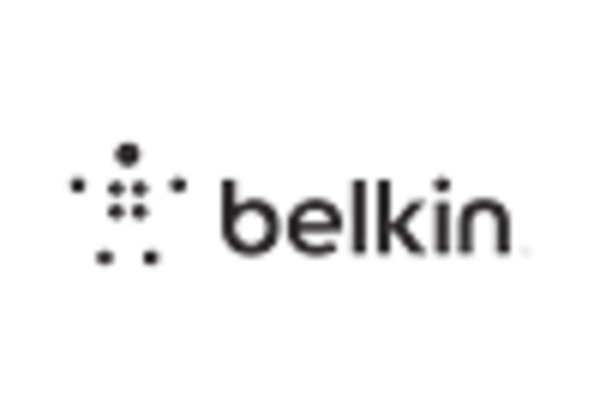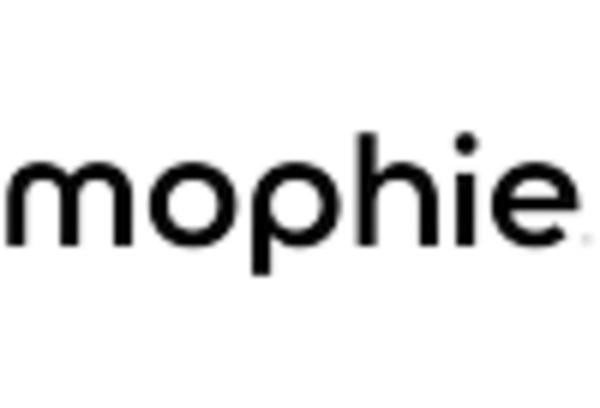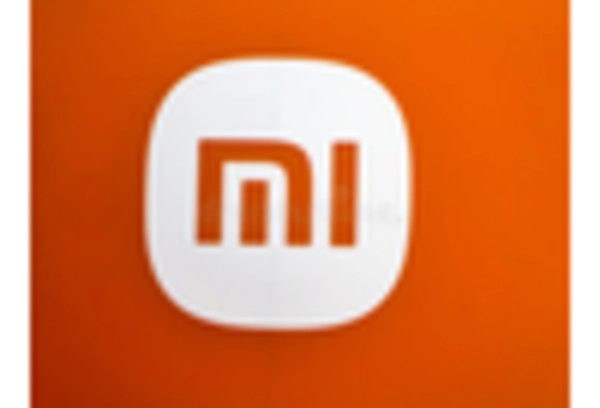Rising Smartphone Penetration
The wireless phone-chargers market is significantly influenced by the rising penetration of smartphones in the United States. As of 2025, smartphone ownership is estimated to exceed 85% of the adult population, leading to an increased demand for convenient charging solutions. This trend is further amplified by the growing preference for premium smartphones that often come equipped with wireless charging capabilities. Consequently, the market is likely to see a substantial increase in sales, as consumers seek compatible charging devices. Additionally, the proliferation of mobile applications and services that require constant connectivity necessitates efficient charging solutions, thereby propelling the wireless phone-chargers market forward. The interplay between smartphone adoption and charging technology creates a robust environment for growth.
Consumer Demand for Convenience
The wireless phone-chargers market is propelled by an escalating consumer demand for convenience and ease of use. Modern consumers increasingly favor products that simplify their daily routines, and wireless charging solutions align perfectly with this trend. The ability to charge devices without the hassle of cords and cables is appealing, particularly in fast-paced environments. Market data indicates that approximately 60% of consumers express a preference for wireless charging options over traditional methods. This shift in consumer behavior is likely to drive manufacturers to innovate and diversify their product offerings, catering to the evolving preferences of users. As convenience becomes a priority, the wireless phone-chargers market is expected to expand, reflecting the changing landscape of consumer electronics.
Increased Focus on Home Automation
The wireless phone-chargers market is influenced by the growing focus on home automation and smart home technologies. As consumers invest in smart home devices, the demand for compatible charging solutions rises correspondingly. The integration of wireless chargers into home automation systems allows for seamless connectivity and convenience. Market analysis suggests that the smart home market is expected to grow by over 20% annually, which could positively impact the wireless phone-chargers market. Furthermore, the trend towards creating multifunctional spaces in homes encourages the adoption of wireless charging stations that blend with home decor. This alignment of home automation and charging technology presents a unique opportunity for growth within the wireless phone-chargers market.
Growth of E-commerce and Online Retail
The wireless phone-chargers market benefits from the growth of e-commerce and online retail platforms. As more consumers turn to online shopping for their electronic needs, the accessibility of wireless charging products has increased significantly. In 2025, e-commerce sales in the electronics sector are projected to account for over 30% of total sales, creating a favorable environment for wireless phone-chargers. This trend not only enhances product visibility but also allows for competitive pricing strategies, which can attract a broader customer base. Additionally, online platforms often provide detailed product information and customer reviews, aiding consumers in making informed purchasing decisions. The synergy between e-commerce growth and the wireless phone-chargers market is likely to foster a dynamic marketplace.
Technological Advancements in Charging Technology
The wireless phone-chargers market is experiencing a surge due to rapid technological advancements. Innovations such as faster charging speeds and improved energy efficiency are becoming increasingly prevalent. For instance, the introduction of Qi wireless charging standards has facilitated compatibility across various devices, enhancing user convenience. As of 2025, the market is projected to grow at a CAGR of approximately 15%, driven by these advancements. Furthermore, the integration of magnetic resonance technology allows for charging at greater distances, which could potentially expand the market's reach. This evolution in technology not only attracts consumers but also encourages manufacturers to invest in research and development, thereby fostering a competitive landscape in the wireless phone-chargers market.

















Leave a Comment